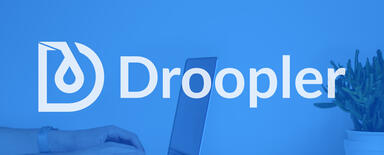
Digital Customer Experience in an Omnichannel Strategy
I wrote an article recently about the rise of the digital customer. I also mentioned an Omnichannel strategy in the article about Digital Experience Platforms. Yet all this never really explained in detail what final goals should brands try to achieve. In this article, I will try to explain what brands have to aim for if they want to deliver a true multichannel experience to digital customers.
To do that, I will share a story of Amy - a digital customer. Let’s follow Amy for a few days as she interacts with an ideal brand which has ticked all the right boxes and has a fantastically organised and working omnichannel communication.
Once upon a time, there was Amy, a digital customer
Amy saw a billboard at the train station with the company’s product. The billboard got her interested in the product. She decided to learn more.
She might have scanned the QR code on the billboard or could have simply googled the main billboard message on her phone to find a website. Either way, Amy was directed to a landing page consistent with the billboard message. It is clearly evident from the graphics and titles that this is the same thing. Being a landing page, it can have more details.
Amy read for a moment. Then she asked a question about the product through a chat window on the page and left her email. The company sent answers a few hours later to Amy’s email with links to additional information.
Amy opens the email on her laptop at home and views the product again. Based on Amy’s interest and high intent, the company is providing Amy with more detailed information about the product. She is more dedicated to learning that a typical first-time visitor. More details can be presented without discouraging Amy. (Amy is not random anymore - she is a specific customer with a specific interest). Amy reads, watches a video and replies to the email with some follow-up questions.
If Amy returns to the phone now in the evening on the sofa at home and visits the landing page again, the information there should be updated and remain tailored to her requirements based on her interest. Perhaps an additional video can be presented or an invitation to try a demo. Perhaps a generic question form will turn into an order form or a buy button which Amy can click to easily buy. The history of her chat and email exchange should be present here as well. Amy should be able to continue the discussion without starting from scratch and explaining who she is.
The company now knows what is interesting to Amy so as she moves through the company website, we can show her articles and information which is relevant to her interests. If she signs up for a newsletter, we can send her a tailored newsletter rather than a generic one.
Amy eventually buys the product. The company can make sure she gets all the information which will help her use it best. It can also upsell offering complementary products or loyalty points. All this, of course, has to be multichannel. If Amy calls the company or sends an email, she expects the company to know that she is a customer without having to explain too much. It would be best if the agent knows her purchasing history so that he can help her best. Same goes for a chatbot, live chat or help centre. These should all be able to understand Amy and serve her what she needs and all these should behave the same way whether she interacts on the phone, tablet, through a voice assistant or directly visits a store (which by the way matches the experience Amy had on-line).
It is so easy for Amy to interact with the company now that she does not feel inclined to look for alternatives.
Amy, the digital customer, has now forged a relationship with a multichannel brand. The brand provides her with what she wants and when she needs it very easily and Amy reciprocates with customer loyalty.
the end…
This little story describes what brands should strive for when building a true multichannel experience. Is it easy? No. Is it worth it? Yes.
How to start? The best approach is to start with a corporate website, which can become the center of the Digital Experience Platform.










